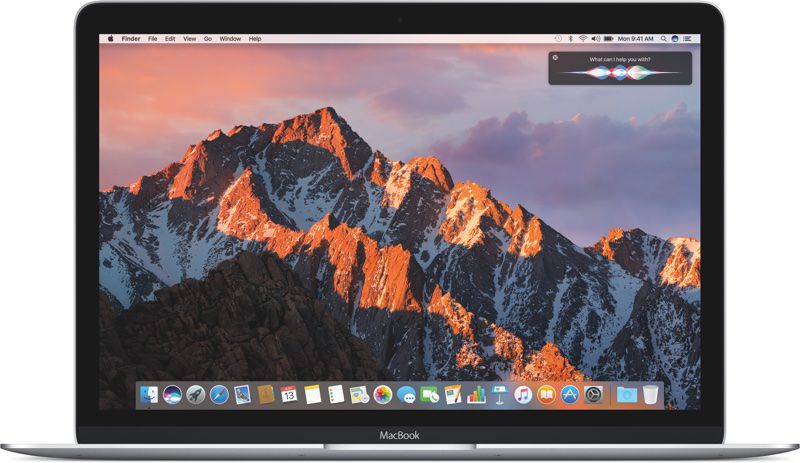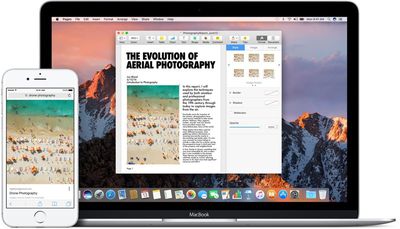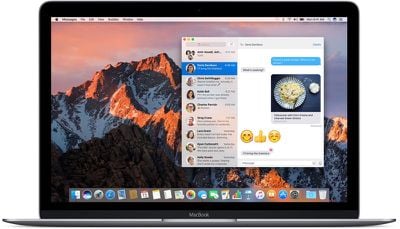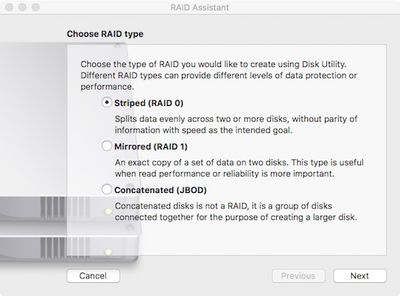
What's New in macOS Sierra
Contents
macOS Sierra, the next-generation Mac operating system, was unveiled at the Worldwide Developers Conference on June 13, 2016 and launched to the public on September 20, 2016. Apple chose to do away with the OS X name in favor of the new "macOS" name to bring the Mac operating system in line with iOS, watchOS, and tvOS.
The main new feature in macOS Sierra is Siri integration, bringing Apple's personal assistant to the Mac for the first time. Siri offers many of the same capabilities available on iOS, along with Mac-specific functionality like the ability to search through documents to quickly find files.
There's also an option to pin Siri search results to the Today section of the Notification Center or to add them to documents to provide up to date information at a glance. Siri can also do things like search through Photos, set reminders, initiate FaceTime calls, and more.
In Photos, computer vision and new deep learning algorithms allow the app to recognize people, places, and things in images using facial, object, and scene recognition, using the information to group images into intelligent collections and enable powerful search capabilities. A new "Memories" tab creates curated collections of past photos to resurface old memories, and there's a new "Places" album for displaying all photos on a world map.
Messages has rich links for previewing web content and watching video clips directly within the app, and it supports iOS 10 sister features like bigger emoji and "Tapback" options for quickly responding to messages with icons like a heart or a thumbs up. In iTunes, Apple Music is redesigned with a bolder look and a simpler interface to improve music discovery.
Continuity features are expanding in macOS Sierra with the introduction of a new "Auto Unlock" option for Apple Watch owners. When an authenticated and unlocked Apple Watch is in close proximity to a Mac, it unlocks automatically without the need to enter a password. Also new on the Continuity front is Universal Clipboard, a feature for copying something on one Apple device and pasting it on another.
Deeper iCloud integration makes all of the files stored on the desktop or the documents folder of a Mac available on all of a user's devices, including other Macs, the iPhone and the iPad through the iCloud Drive app, and the web through iCloud.com.

All Mac apps, first and third-party, are able to use multiple tabs in macOS Sierra, so in apps like Pages, users work with multiple tabs instead of multiple windows when accessing more than one document. Picture in Picture multitasking is also new in the OS, allowing users to watch a video while doing other things.
Along with iOS 10, macOS Sierra supports Apple Pay in the web browser, letting users pay for purchases made on the web with Apple Pay. Payments are authenticated through a connected iPhone using Touch ID or an unlocked Apple Watch.
macOS Sierra is a free download that became available for all Mac users with a compatible machine.
Current Version - macOS Sierra 10.12.5
The current version of macOS Sierra is macOS Sierra 10.12.6, released to the public on July 19, 2017. macOS Sierra 10.12.6 is a minor update that focuses on bug fixes, security enhancements, and performance improvements.
macOS Sierra 10.12.6 is likely to be one of the last updates made to the macOS Sierra operating system as Apple has shifted focus to macOS High Sierra, set to be released this fall.
The macOS Name
Apple's Mac operating system has long been known as "OS X" since 2001, but in 2016, Apple shifted from OS X to macOS to unify operating system names across its entire product lineup.
macOS joins iOS, tvOS, and watchOS, and though Apple has moved from OS X to macOS, it has continued naming Mac operating systems after California landmarks. In 2016, macOS is "macOS Sierra," named for the Sierra Nevada mountains that span from central California to Nevada.
Siri
For the first time, Apple's Siri personal assistant is available on Macs through macOS Sierra. Siri can perform the same functions available on iOS, like answering simple queries, looking up information, sending messages, opening apps, and more, plus there are Mac-specific functions.
Siri is able to search through your files to quickly find content that you're looking for with queries like "Find me the documents I opened last week." Siri also understands context, so that can be followed up with further refinements like "just the ones John sent me."
In macOS Sierra, Siri can be accessed through an icon on the menu bar, a dock app, or a user-specified keyboard command.
Siri results, which are displayed in individual windows, can be pinned to the Today section of the Notification Center for later reference, or inserted into a variety of documents. Siri results are dynamic and are kept up to date, so if you ask Siri about the score of a particular sports game, you can pin the resulting answer to the Notification Center where you'll be able to see score changes at a glance.

The ability to pin Siri results to the Notification Center essentially gives you a huge array of widgets that are kept up to date with relevant information.
Siri is also able to assist with your day to day work and help with multitasking. Siri can find you web images, which can be dragged directly into a document, or the assistant can bring up a Map to a party that can be included with email invitations. A lot of work has been done to make Siri useful in many different ways in the Mac.
Example Siri for Mac queries
Show the PDFs in my downloads folder
Just the PDFs I worked on last week (a refining request)
Look up the score for tonight's football game
Get directions to the closest coffee shop
How much free space is on my Mac?
Locate all the files I worked on yesterday
Play some 80s songs (Apple Music subscription required)
What's the weather like in San Diego?
Show me photos I took last year
Send a message to John
Continuity
There are expanded Continuity features in macOS Sierra, including a new automatic unlocking feature and a universal copy paste option. With automatic unlock, an authenticated Apple Watch can be used to unlock a Mac over Bluetooth whenever you are near your Mac. The feature requires a 2013 or newer Mac, as well as iOS 10 and watchOS 3 for your iPhone and Apple Watch.
Universal Clipboard allows you to copy something on a Mac and then paste it on an iPhone or iPad and vice versa. It's essentially a cross-device copy paste feature.

Photos
The Photos app features a new "Memories" section designed to surface photos that you might have forgotten about, like past trips. It's intelligent and can group photos based on time, location, and even the people and objects in the photo thanks to new computer vision advances.
With Memories, you can quickly generate little video montages of the photos from specific trips or locations, with the app automatically adding music, titles, and transitions. Music can be customized to convey a specific feeling, like "Epic," "Sentimental," and "Happy," or you can add your own. Titles and the photos included in each video are also customizable.

Some of the memory categories Photos surfaces includes Recent events, Last Week, Last Weekend, Year summary, Trips, Birthdays, and more.
To power Memories and other features, Photos scans all of your pictures and determines who and what is in them, enabling powerful new search capabilities based on topics. Because Photos can tell what's in a photo, you can search for images with cats, trees, mountains, and tons more.
There are also newly improved facial recognition features that can better tell who is in an image, and all images of people are organized into a "People" album.
According to code buried within macOS Sierra, the Photos app in iOS 10 and macOS Sierra is able to distinguish between seven different facial expressions including greedy, disgust, neutral, scream, smiling, surprise, and suspicious.
When it comes to scene and object recognition, it appears Photos is able to recognize upwards of 4,000 different items across a wide variety of categories.
A new "Places" album organizes all of your photos onto a world map so you can see all of the images you've taken in every location around the world. Zooming in lets you see the photos you shot in each place, while zooming out offers a wider overview.
As in iOS 10, it's now possible to edit Live Photos using filters and other image adjustment tools. Third-party developers are also able to use a Live Photo Editing API to create tools for editing Live Photos.
Photos also has a new "Brilliance" tool for pulling in highlights and adding contrast to improve the detail in images.
Messages
Messages now supports rich links, so you can see previews of content like websites right in the messages feed. With rich links, videos can also be played without leaving the messages app.

iOS 10 Messages features, including "Tapback" for quickly responding to messages with an icon like a heart or a thumbs up and bigger emoji, are available in macOS Sierra. When sending one to three emoji, they're displayed much larger than normal.
Apple Music
The Apple Music section of iTunes has been redesigned with a simpler interface that's supposed to make it easier to discover new music to listen to. Tabs now include "Library," "For You," "Browse," and "Radio," for better content discovery, and a new "Search" tab makes searching for songs and albums quicker.

As with the iOS 10 version of Apple Music, the new look focuses on album art, with a bright, simple aesthetic featuring bold headlines and lots of white space. There's also a new feature for viewing lyrics to songs while listening to them using the MiniPlayer.
iCloud
In macOS Sierra, all files stored either on the desktop or in the Documents folder are automatically synced to iCloud, making them available on other Macs and on iOS devices. On other Macs, when logging into an iCloud account, desktop and Document files are seamlessly synced and immediately available.
On the iPhone and iPad, files located on the desktop or in the Mac's document folder are available through the iCloud Drive app.
Files are also available on Windows machines through the iCloud for Windows app and they can be accessed on iCloud.com, making them available on all devices that support a web browser.
Optimized Storage
Optimized Storage is a new feature designed to automatically free up storage space when a Mac's HD or SSD is running out of room. Optimized Storage stores infrequently used items in iCloud and removes the from the Mac, plus it sends reminders to users to prompt them to delete used app installers and clear out duplicate downloads, caches, logs, and more.

Files that are moved to iCloud include ePub books that have been read, old screenshots, iTunes U courses, full-resolution photos, unused Mac App Store apps, old presentations, old image and text files, old documents, unused fonts, old Mail attachments, and more.
Data that can be permanently removed includes Apple Music caches, trash items after 30 days, web caches, cached Map tiles, fault and error logs, inactive iTunes downloads, Quick Look thumbnails, IPSW files from iTunes, inactive Mac App Store downloads, Xcode caches, old iPhone backups, orphaned iTunes database files, and more.

Apple Pay
Alongside iOS 10 and macOS Sierra, Apple is expanding Apple Pay to the web. On participating websites that have signed up to accept Apple Pay, the payments service can be used for web purchases. Apple Pay purchases made on the web are authenticated through an unlocked Apple Watch that is attached to a user's wrist or through the Touch ID button on the iPhone.

Payments are confirmed with a finger on the Touch ID button or through double clicking on the side button of an authenticated Apple Watch.
Other Features
Picture in Picture
In iOS 9, Apple introduced a Picture in Picture multitasking feature for iPads, and in macOS Sierra, that feature is expanding to the Mac. When watching a video in Safari or iTunes, it can be floated over the desktop so you can continue to work on other things.
The floating video can be resized, dragged, and pinned to any corner of the Mac's screen.
Tabs
Tabs are being expanded from Safari to all Mac apps that support multiple windows, such as Maps, Mail, Pages, Numbers, Keynote, and more. In those apps, instead of having to open multiple documents at one time, users are now able to access more than one document through multiple tabs.

In an app like Pages, for example, when in full screen mode, you can copy/paste between documents or reference multiple documents through tabs. In Maps, you can browse through multiple locations, and in Mail, you can work on multiple email drafts at one time without being overwhelmed with windows.
Tab support is also being extended to third-party apps.
Safari Extensions
Safari extensions, previously downloaded through the web, have moved to the Mac App Store in macOS Sierra. Moving extensions to the Mac App Store gives them more visibility while also ensuring they adhere to Apple's standards.
Safari Plug-ins
In Safari 10, included in macOS Sierra, Apple disables common plug-ins like Adobe Flash, Java, Silverlight, and QuickTime by default in an effort to focus on HTML5 content and improve the overall web browsing experience. Accessing this content on websites where it is required now requires playback to be authorized with a click.

RAID Support
Apple has reintroduced the ability to create and manage RAID volumes in Disk Utility on macOS Sierra, functionality that available in earlier versions of OS X but was removed in OS X El Capitan.

Gatekeeper Changes
Apple has tweaked System Preferences to remove the Gatekeeper security option that allowed apps to be downloaded from anywhere rather than just from the Mac App Store or from trusted developers.

Apps from untrusted developers can still be opened by clicking "Open Anyway" in System Preferences --> Security & Privacy, but there is no longer a universal option to automatically open all downloaded apps.
Differential Privacy
iOS 10 and macOS Sierra include a new Differential Privacy feature that allows Apple to gather data and customer usage patterns from a large number of users without compromising individual security.
In macOS Sierra, Differential Privacy is used to collect data to improve autocorrect suggestions and Lookup Hints.
Differential data collection is entirely opt in and users can decide whether or not to send data to Apple.
HiDPI Scaling
macOS Sierra users who have 4K displays have noticed HiDPI resolutions beyond 1920 x 1080 have been eliminated, leaving them with options for 1080p or a non-scaled native resolution of 3840x2160. It is not yet clear if this is a bug or a feature that was intentionally removed.
Feature Highlights and How Tos
macOS Sierra: Save Disk Space With the New 'Optimize Storage' Option
macOS Sierra and iOS 10: Universal Clipboard for Cross Device Copy/Paste
macOS Sierra: Photos Gains 'Memories' and Messages Adds Rich Links, Tapback, and Large Emoji
macOS Sierra: Picture in Picture Mode for Safari and iTunes Videos
macOS Sierra: iCloud Drive Syncs Desktop Files and Documents Across Devices
Compatible Macs
macOS Sierra is able to run on the following Macs:
2009 and later
iMac (Late 2009)
MacBook (Late 2009)
2010 and later
MacBook Air (Late 2010)
MacBook Pro (Mid 2010)
Mac mini (Mid 2010)
Mac Pro (Mid 2010)
Release Date
Following a months-long beta testing period after its WWDC debut, macOS Sierra was released to the public on Tuesday, September 20. It is a free update for all Mac users who own a Sierra-compatible Mac.

